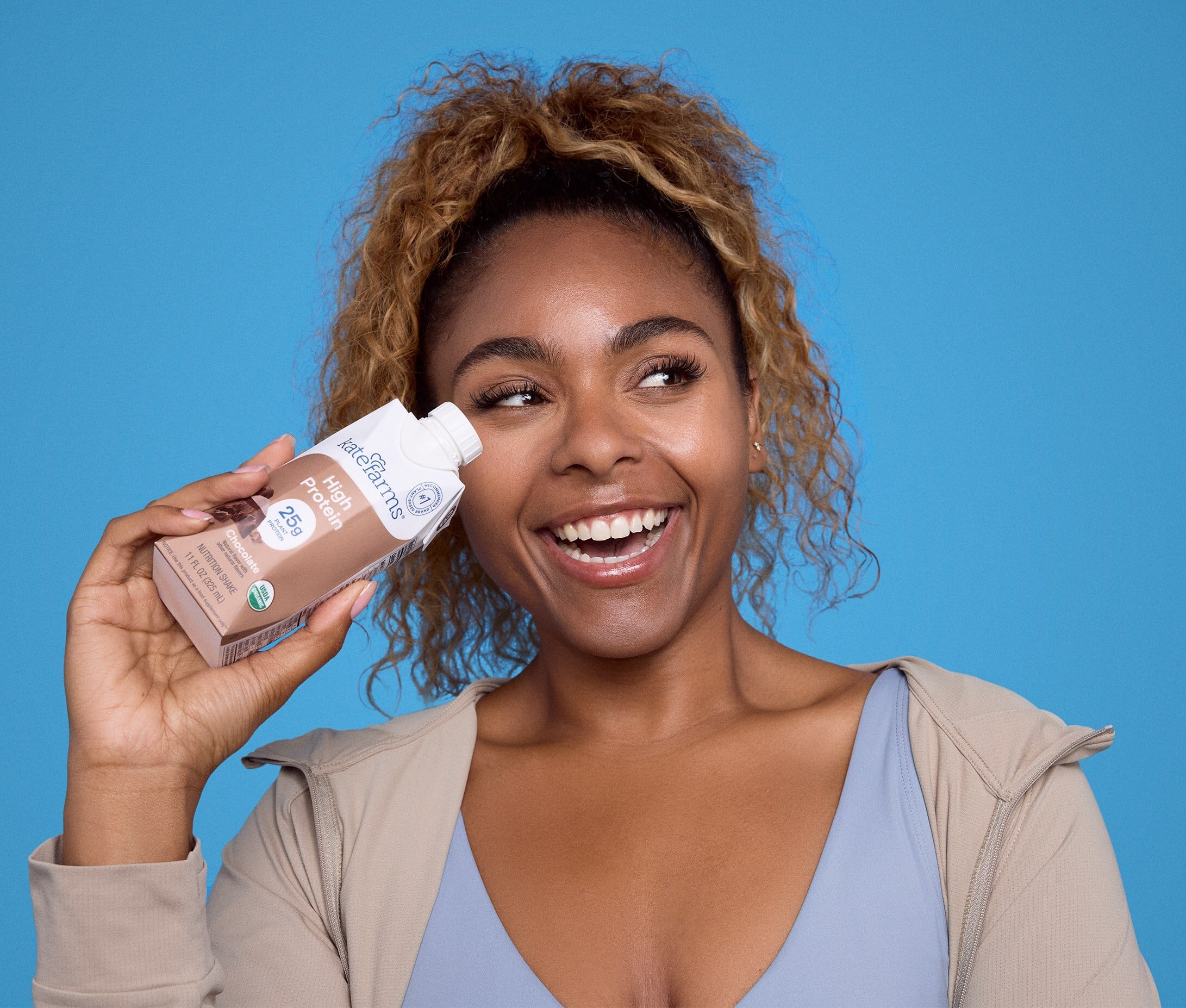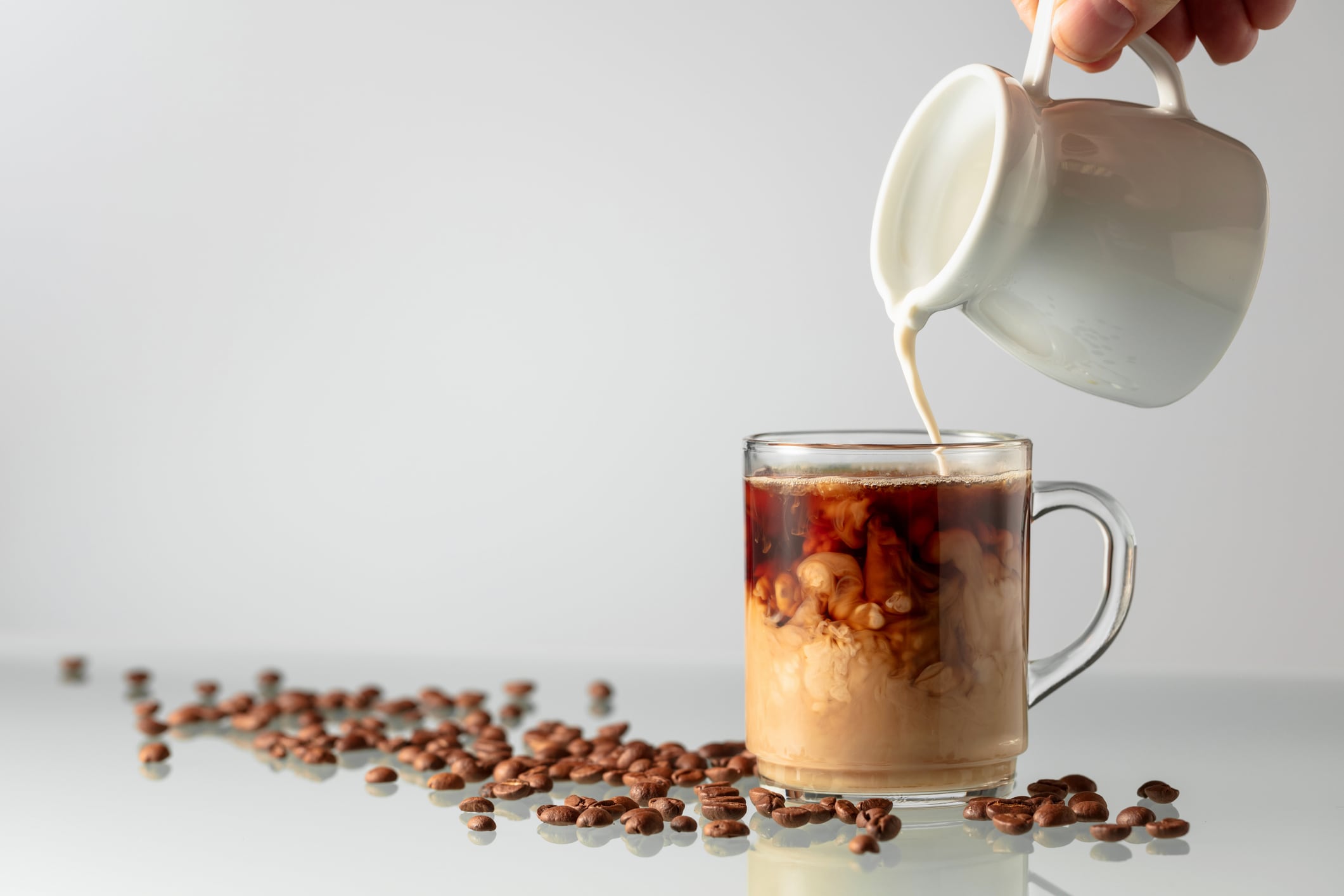Formulated with input from GLP-1 users, the company’s new release taps into two emerging markets – functional beverage and personalized nutrition – by marrying two consumer megatrends: weight management and high-protein foods.
Known for its alternative feed formulas and nutrition shakes, this is Kate Farms’ first foray into the high-protein category and represents a strategic expansion of its plant-based shakes portfolio.
Science-backed nutrition
Unlike mainstream protein shakes, Kate Farms’ new range is clinically-developed to expand functionality beyond the typical advantages of high-protein shakes – such as satiety and muscle support – and bridge the specific nutritional gaps that affect consumers on weight management medications such as Ozempic, Wegovy, Mounjaro and GLP-1.
The range – which is dairy-free – offers a plant-based alternative to dairy-based nutrition shakes, including Danone’s own shelf-stable Oikos High-Protein Shakes, and majors on low sugar and allergen-free claims, among other USPs.
Available in Strawberry and Chocolate flavors, each shake packs 25g of plant-based protein; 6g of fiber; 27 essential vitamins and minerals; 160 calories and 0g sugar. As with the company’s other products, the range is dairy-free, non-GMO and organic, with no artificial colors or sweeteners added in.
Getting the recipe right took 18 months and numerous tests to refine nutrient composition and ensure taste was appealing, Kate Farms’ Joe Rupnow, vice-president of new enterprises, explained.
“We led preference tests, sensory panels, and tastings with real people, including GLP-1 users,” Rupnow said. “We pushed the shake’s flavor and sensory experience to make it something you’d actually want to drink – not just something you should.”
“For example, the 25 grams of organic pea protein helps you support muscle health throughout your health journey, ” Rupnow added.
“The fact that High Protein Nutrition Shake is a complete source of protein means that it delivers all 9 essential amino acids that your body can’t produce on its own.”
The range is sold direct-to-consumer via Kate Farms’ website and Amazon.
What’s in it for Danone?
With Kate Farms now part of Danone, what are the implications for the food, beverage and nutrition major?
Danone North America only just launched dairy-based high-protein shakes from Oikos in May 2025: entering a billion-dollar market that has grown by nearly 16% year over year.
Owning Kate Farms – which leveraged its own in-house R&D team to bring its plant-based high-protein shake to market – means the food, beverage and nutrition major now has a clinically-developed, branded range of shakes with an even higher protein content than its mainstream Silk plant-based ranges.
But Kate Farms remains most strongly associated with medical nutrition – and Danone considers it a strategic acquisition to serve the group alongside its Nutricia, Real Food Blends, and Functional Formularies brands.
But with the high-protein shakes market in major growth, there are clear opportunities for Danone to flex its distribution and marketing muscle and bring Kate Farms’ plant-based, medically-backed shakes to a wider consumer base.
Danone has been quietly honing in on weight management medication users – including by launching a ‘patient portal’ with the aim to educate consumers about nutrition and tracking the use of the term ‘GLP-1′ on social media during major sport event Super Bowl LIXX. The dairy major also recently acquired The Akkermansia Company, whose core product is a next-gen biotic that helps to manage obesity.
‘GLP-1 friendly’: Is there a definition?
But marketing GLP-1-targeted food and beverage can be challenging, particularly since there is no definition yet for ‘GLP-1-friendly’. Most food manufacturers have so far avoided direct references to the medications, instead leaning on general nutritional messaging around portion control, protein content and fiber.
A notable exception has been Congara Brands – the group behind Healthy Choice in the US – which uses its own ‘On Track’ label to signify that products may be suitable for GLP-1 users.
However, evidence-based data that could guide the development of nutritional standards remains limited.



